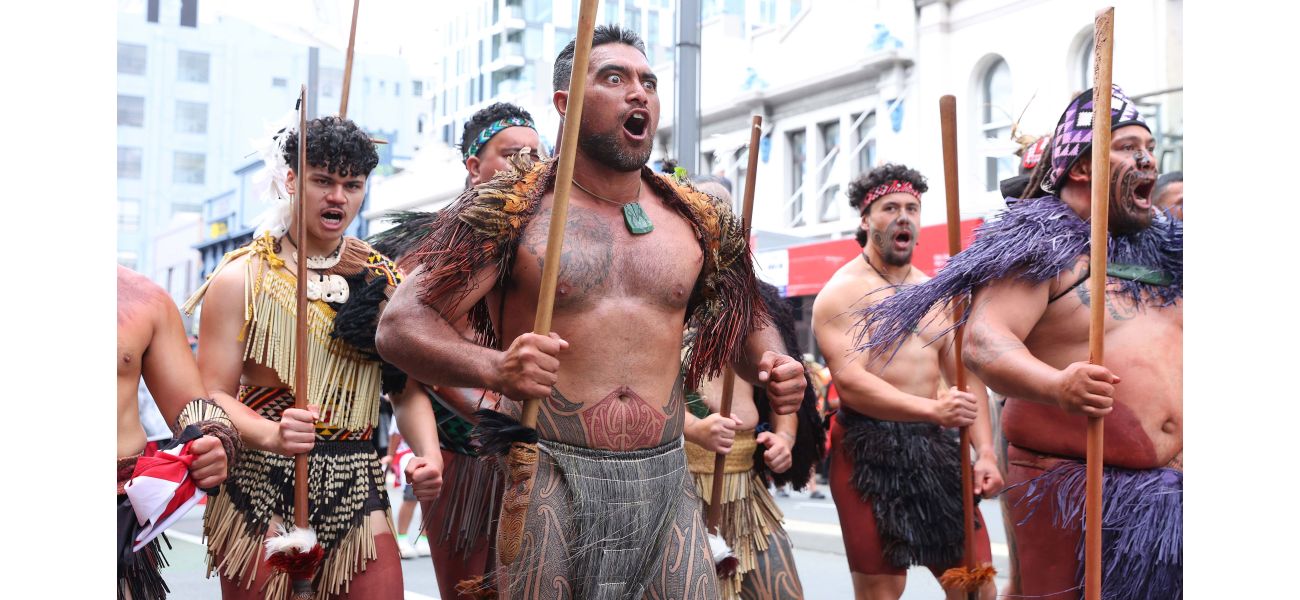What is the reason for the mass demonstrations in New Zealand demanding Māori rights?
A new law in New Zealand has caused political turmoil and led to over 35,000 protestors at Parliament, as it would change the treaty between the British Crown and Māori chiefs.
November 19th 2024.

Today, in New Zealand's capital city of Wellington, thousands of people gathered to take part in a weeklong protest, known as a hīkoi, against a proposed law that has sparked controversy and political turmoil. This law, which would redefine the country's founding document, the Treaty of Waitangi, has been met with opposition from various groups and individuals, with more than 35,000 people showing up to join the protest.
The Treaty of Waitangi, signed in 1840 between the British Crown and Māori chiefs, is considered a crucial document in New Zealand's history. It outlined the principles guiding the relationship between the Crown and Māori, promising the Indigenous people rights and privileges as British citizens. However, the English and Māori versions of the treaty differed in their interpretations of the power that the Māori chiefs were ceding over their affairs, lands, and autonomy.
Over the years, the Crown has breached both versions of the treaty, leading to a decline in Māori language and culture and the confiscation of tribal land. In response to a growing Māori protest movement, the courts, lawmakers, and the Waitangi Tribunal have attempted to address these breaches by interpreting the principles of the treaty and seeking redress for Māori.
This has led to positive changes, such as a revival of the Māori language and policies targeting disparities faced by Māori. However, there is still much work to be done, as Māori continue to face disenfranchisement in many areas. The recent proposed law by lawmaker David Seymour has sparked fresh debate, with some New Zealanders feeling that Māori have been given special treatment and should not be granted any further rights.
Seymour's bill, which would set specific definitions of the treaty's principles and apply them to all New Zealanders, has been met with widespread opposition. Former prime ministers, senior lawyers, and thousands of Māori and non-Māori have voiced their disapproval, with many taking part in the hīkoi to protest against the bill.
Peaceful walking protests, like the hīkoi, are a tradition in Māori culture and have been used at critical moments in the national conversation about treaty rights. This march to Parliament has drawn large crowds, with people waving flags, singing Māori songs, and listening to speeches. Many are marching specifically against Seymour's bill, but others are also protesting against various policies of the current government on Māori affairs.
While the bill may have passed its first reading, it is not expected to become law, with many who initially supported it now withdrawing their support. Critics have raised concerns about the potential constitutional upheaval and the removal of rights promised in the treaty that are now protected by law. They have also criticized Seymour for stirring up backlash against Indigenous people. As the debate continues, it is clear that the Treaty of Waitangi and the ongoing conversation about honoring its promises to Māori remains a crucial and contentious issue in New Zealand.
The Treaty of Waitangi, signed in 1840 between the British Crown and Māori chiefs, is considered a crucial document in New Zealand's history. It outlined the principles guiding the relationship between the Crown and Māori, promising the Indigenous people rights and privileges as British citizens. However, the English and Māori versions of the treaty differed in their interpretations of the power that the Māori chiefs were ceding over their affairs, lands, and autonomy.
Over the years, the Crown has breached both versions of the treaty, leading to a decline in Māori language and culture and the confiscation of tribal land. In response to a growing Māori protest movement, the courts, lawmakers, and the Waitangi Tribunal have attempted to address these breaches by interpreting the principles of the treaty and seeking redress for Māori.
This has led to positive changes, such as a revival of the Māori language and policies targeting disparities faced by Māori. However, there is still much work to be done, as Māori continue to face disenfranchisement in many areas. The recent proposed law by lawmaker David Seymour has sparked fresh debate, with some New Zealanders feeling that Māori have been given special treatment and should not be granted any further rights.
Seymour's bill, which would set specific definitions of the treaty's principles and apply them to all New Zealanders, has been met with widespread opposition. Former prime ministers, senior lawyers, and thousands of Māori and non-Māori have voiced their disapproval, with many taking part in the hīkoi to protest against the bill.
Peaceful walking protests, like the hīkoi, are a tradition in Māori culture and have been used at critical moments in the national conversation about treaty rights. This march to Parliament has drawn large crowds, with people waving flags, singing Māori songs, and listening to speeches. Many are marching specifically against Seymour's bill, but others are also protesting against various policies of the current government on Māori affairs.
While the bill may have passed its first reading, it is not expected to become law, with many who initially supported it now withdrawing their support. Critics have raised concerns about the potential constitutional upheaval and the removal of rights promised in the treaty that are now protected by law. They have also criticized Seymour for stirring up backlash against Indigenous people. As the debate continues, it is clear that the Treaty of Waitangi and the ongoing conversation about honoring its promises to Māori remains a crucial and contentious issue in New Zealand.
[This article has been trending online recently and has been generated with AI. Your feed is customized.]
[Generative AI is experimental.]
0
0
Submit Comment





